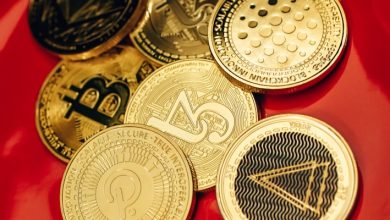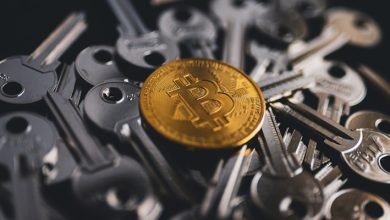How Token Burning Mechanisms Work and Their Impact

- Understanding Token Burning Mechanisms
- The Process of Token Burning Explained
- Benefits of Token Burning for Cryptocurrency Projects
- Analyzing the Impact of Token Burning on Token Value
- Token Burning vs. Token Minting: A Comparison
- Regulatory Considerations for Token Burning Mechanisms
Understanding Token Burning Mechanisms
Token burning mechanisms are an essential aspect of many cryptocurrency projects, impacting the overall supply and value of the tokens. Understanding how token burning works can provide insight into the dynamics of the crypto market.
Token burning is a process where a certain number of tokens are permanently removed from circulation, reducing the total supply. This mechanism is often used to create scarcity, which can drive up demand and increase the value of the remaining tokens. By decreasing the supply, token burning can help maintain or even boost the token’s price.
There are several ways in which token burning can be implemented. One common method is to burn a portion of the tokens collected as fees. For example, in decentralized exchanges, a percentage of the trading fees can be burned, effectively reducing the supply of the tokens over time.
Another approach to token burning is through buybacks, where the project uses its profits to purchase tokens from the market and then burn them. This can be a strategic way to increase the value of the remaining tokens by reducing the overall supply.
Overall, token burning mechanisms play a crucial role in shaping the economics of a cryptocurrency project. By removing tokens from circulation, token burning can help create scarcity, drive up demand, and potentially increase the value of the tokens. Understanding how token burning works can provide valuable insights for investors and enthusiasts in the crypto space.
The Process of Token Burning Explained
One of the key mechanisms used in cryptocurrency projects to manage token supply and increase their value is token burning. This process involves permanently removing a certain number of tokens from circulation, reducing the total supply available in the market. The burning process is typically carried out by sending tokens to a public address where they are unspendable or locked forever.
Token burning helps create scarcity, which can drive up demand for the remaining tokens in circulation. This reduction in supply can lead to an increase in the value of the token as it becomes more scarce and sought after by investors. Additionally, token burning can also help to stabilize the price of a token by preventing inflation caused by an oversupply in the market.
The process of token burning is usually transparent and verifiable on the blockchain, allowing investors to track the total supply of tokens and verify that the burning has taken place as announced by the project team. Some projects may choose to burn tokens periodically, while others may do so in response to specific events or milestones.
Overall, token burning is an effective strategy for managing token supply and increasing the value of a cryptocurrency. By creating scarcity and increasing demand, token burning can help support the long-term growth and sustainability of a project. Investors should consider the token burning mechanism when evaluating the potential value of a cryptocurrency investment.
Benefits of Token Burning for Cryptocurrency Projects
Token burning is a common practice in the cryptocurrency world that involves permanently removing a certain number of tokens from circulation. This process has several benefits for cryptocurrency projects, including:
-
Reducing the total supply of tokens, which can help increase their scarcity and potentially drive up their value over time.
-
Creating a deflationary mechanism that can counteract inflation and promote long-term price stability.
-
Enhancing the tokenomics of a project by improving the overall utility and functionality of the remaining tokens.
-
Increasing investor confidence by demonstrating a commitment to maintaining a healthy ecosystem and rewarding token holders.
Overall, token burning can be a strategic tool for cryptocurrency projects looking to manage their token supply effectively and create value for their community of users and investors.
Analyzing the Impact of Token Burning on Token Value
Token burning is a mechanism used by blockchain projects to reduce the total supply of tokens in circulation. This process involves permanently removing a certain number of tokens from the market, typically by sending them to an inaccessible wallet where they can no longer be traded or used. The impact of token burning on token value can be significant, as it reduces the overall supply of tokens available, which can create scarcity and drive up demand.
When the supply of a token is reduced through burning, the remaining tokens become more valuable due to their scarcity. This can lead to an increase in the price of the token as investors and traders compete for the limited supply. Additionally, token burning can also help to increase investor confidence in the project, as it demonstrates a commitment to maintaining the value of the token over time.
However, it is important to note that token burning is not a guaranteed way to increase the value of a token. The success of this mechanism depends on various factors, including the overall demand for the token, the utility of the token within the project ecosystem, and market conditions. It is also essential for projects to be transparent about their token burning practices to maintain trust and credibility with their community.
Token Burning vs. Token Minting: A Comparison
When it comes to token economics, two common mechanisms that are often used are token burning and token minting. Both of these mechanisms play a crucial role in shaping the supply and demand dynamics of a token, ultimately impacting its value in the market.
Token burning involves the permanent removal of a certain number of tokens from circulation. This process is usually carried out by sending the tokens to an address where they can never be accessed again. By reducing the total supply of tokens, token burning can help increase scarcity, which in turn can drive up the value of the remaining tokens.
On the other hand, token minting involves the creation of new tokens. This process is often used to incentivize certain behaviors, such as staking or providing liquidity. By minting new tokens, the total supply increases, which can have a dilutive effect on the value of existing tokens.
When comparing token burning to token minting, it is important to consider the impact that each mechanism has on the token’s value proposition. While token burning can create scarcity and drive up value, token minting can provide incentives for users to participate in the network.
Regulatory Considerations for Token Burning Mechanisms
When implementing token burning mechanisms, it is crucial for projects to consider the various regulatory implications that may arise. Token burning can have a significant impact on the supply and demand dynamics of a token, potentially affecting its classification under existing securities laws.
Regulators around the world are closely monitoring token burning activities to ensure compliance with anti-money laundering (AML) and know your customer (KYC) regulations. Projects must be transparent about their token burning practices to avoid any potential legal issues.
Furthermore, projects should also consider the tax implications of token burning. In some jurisdictions, token burning may be considered a taxable event, leading to potential tax liabilities for token holders. It is essential for projects to consult with legal and tax experts to navigate these complex regulatory considerations.



